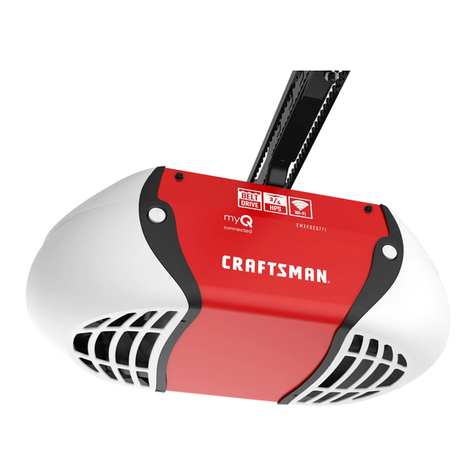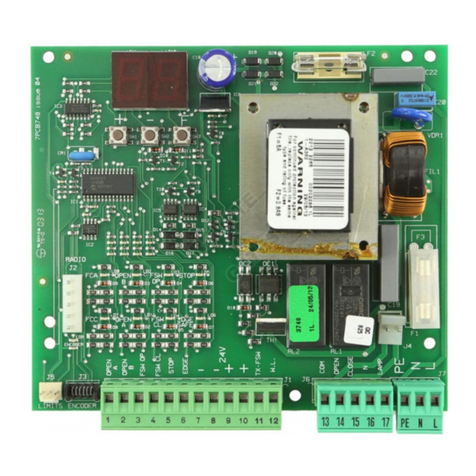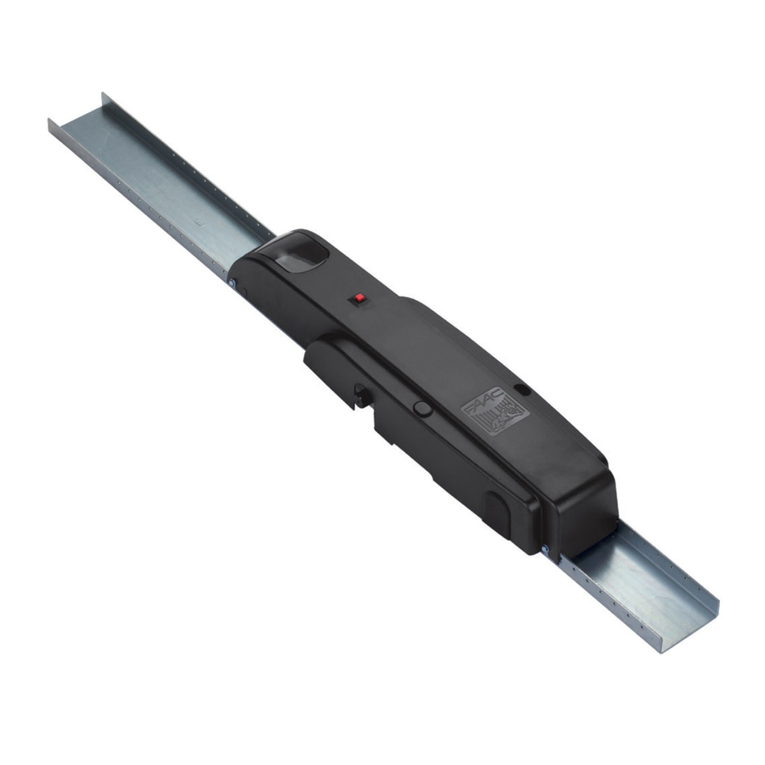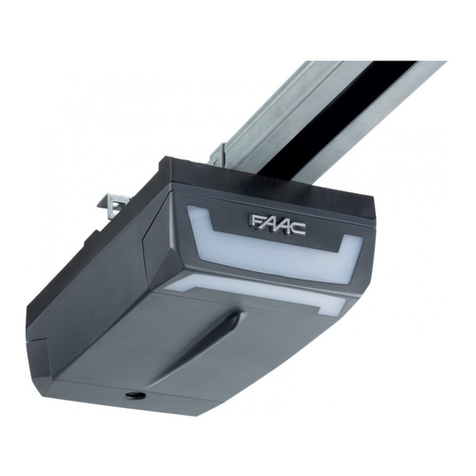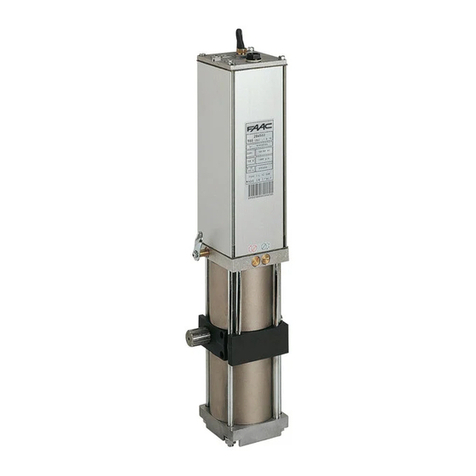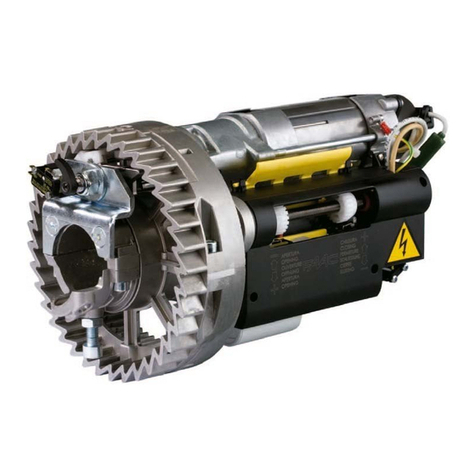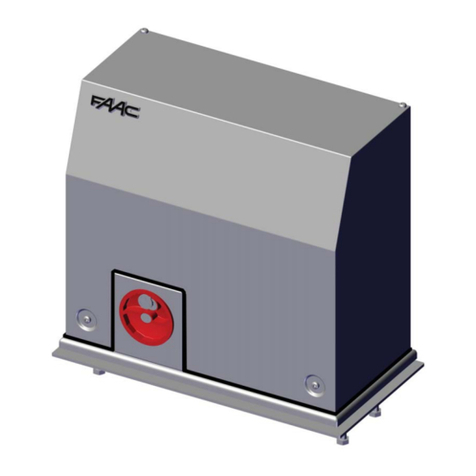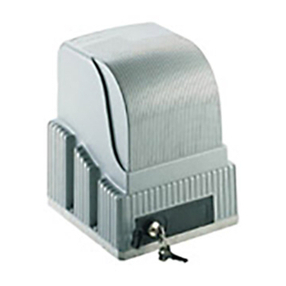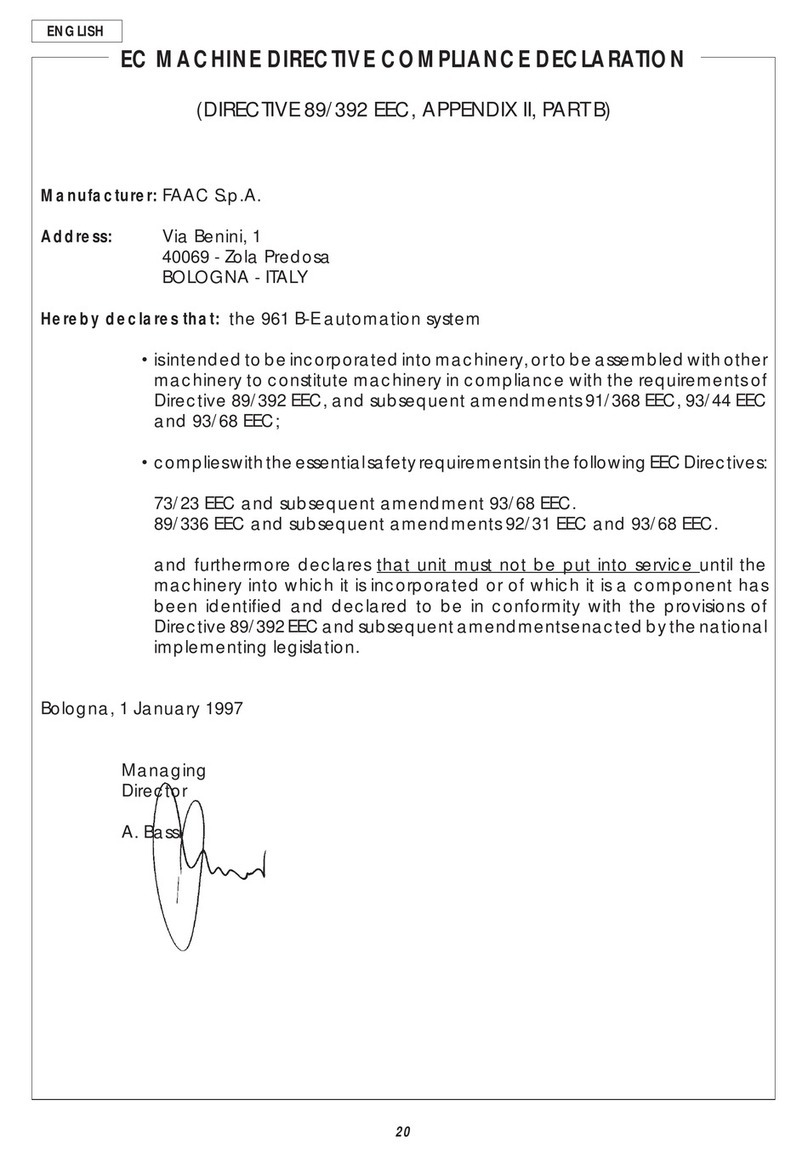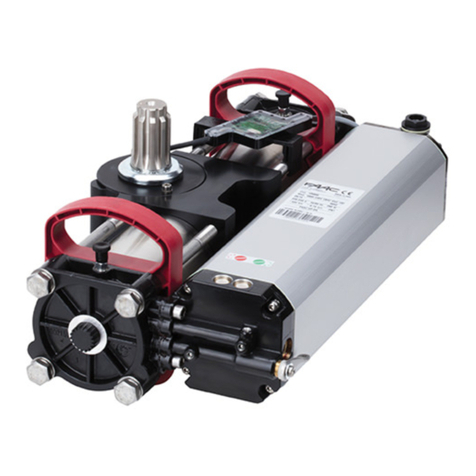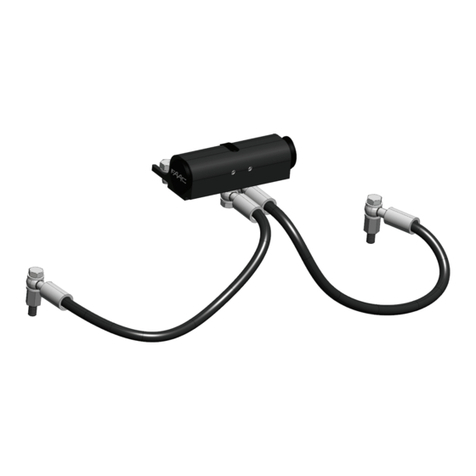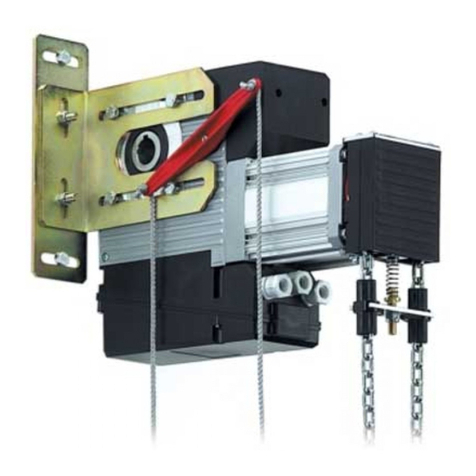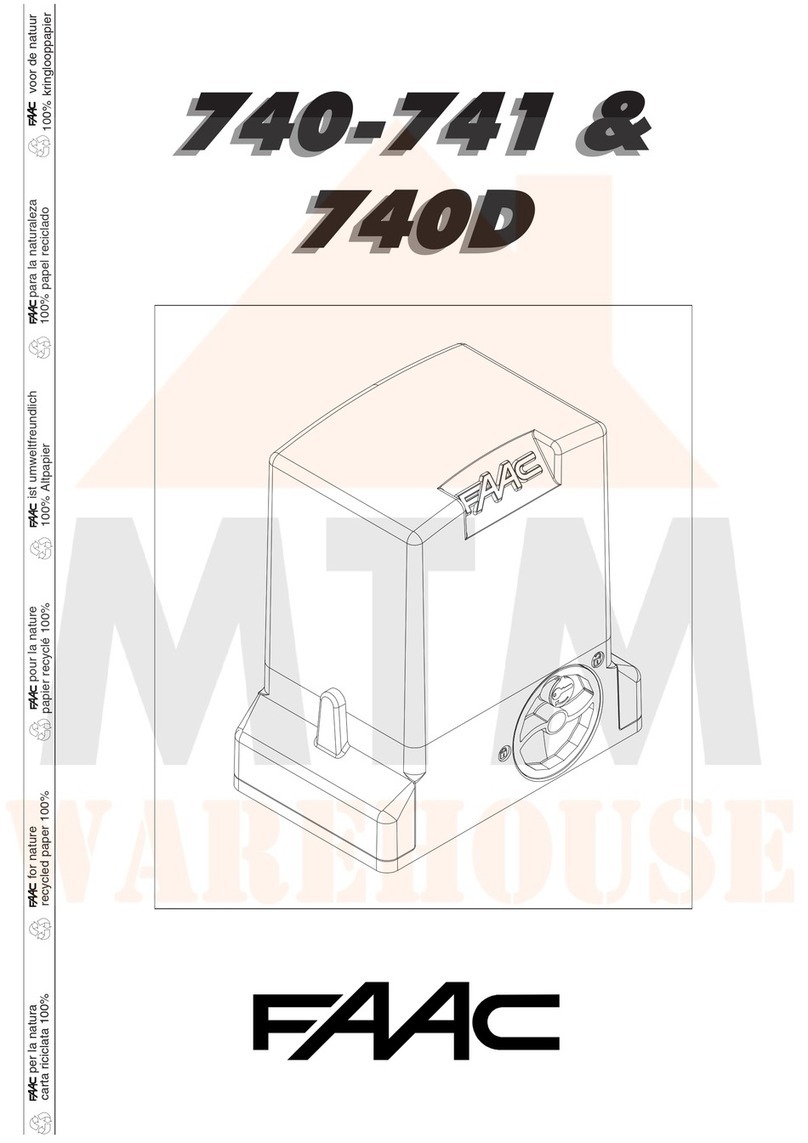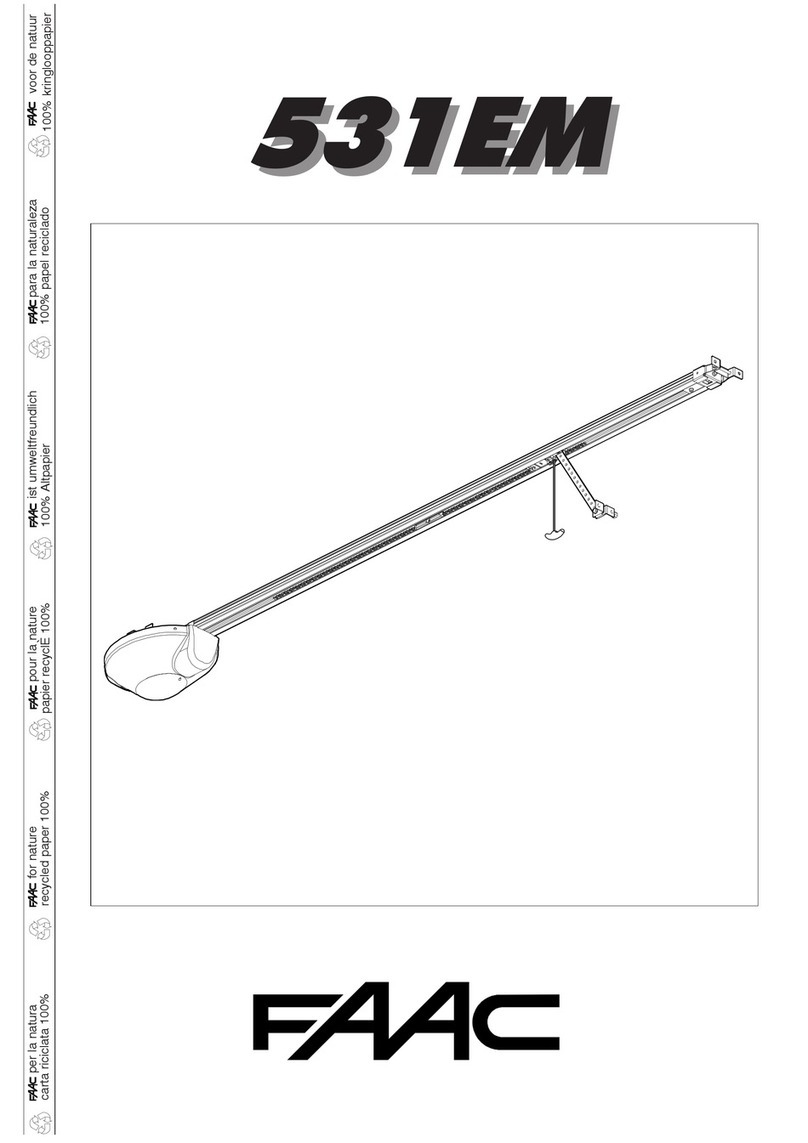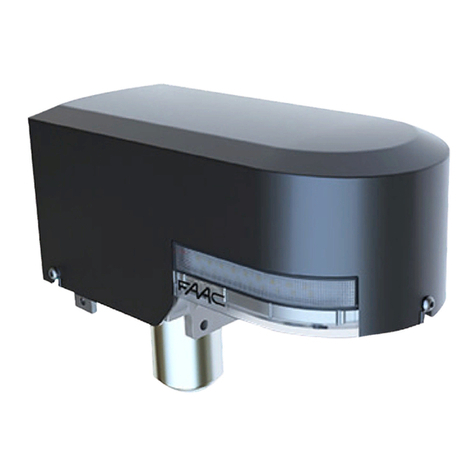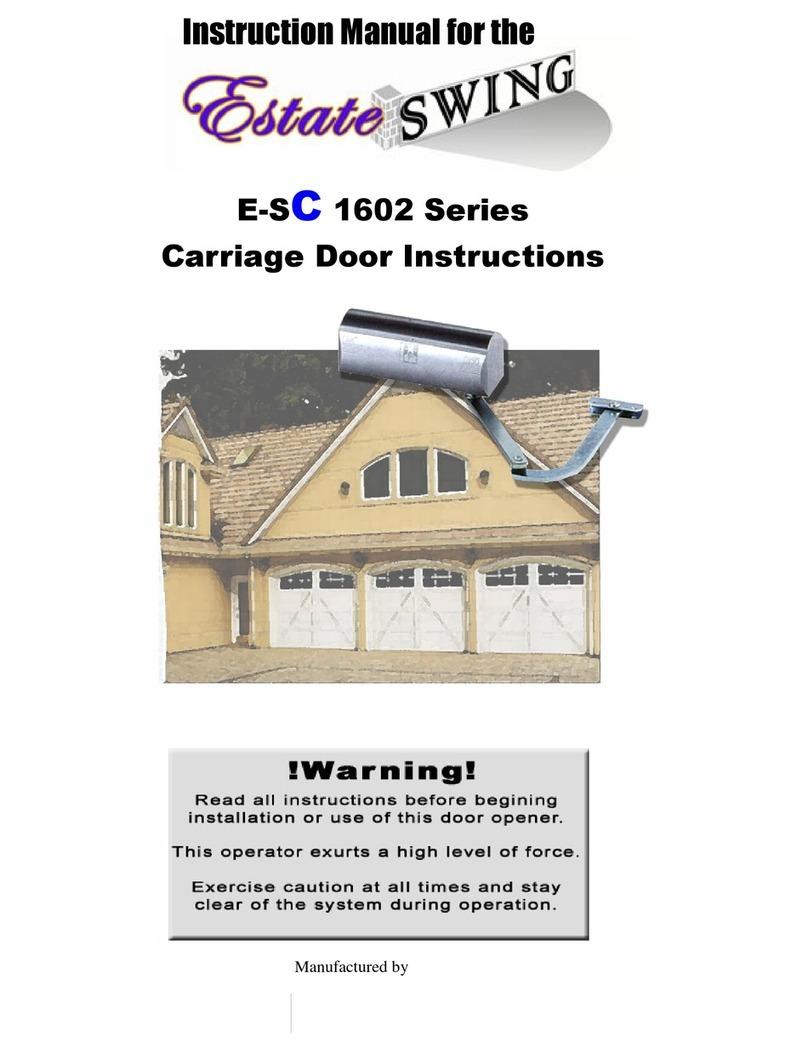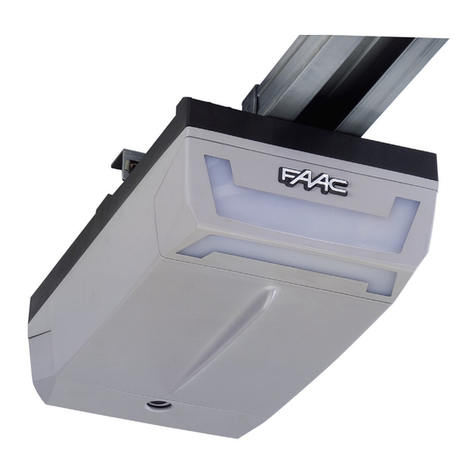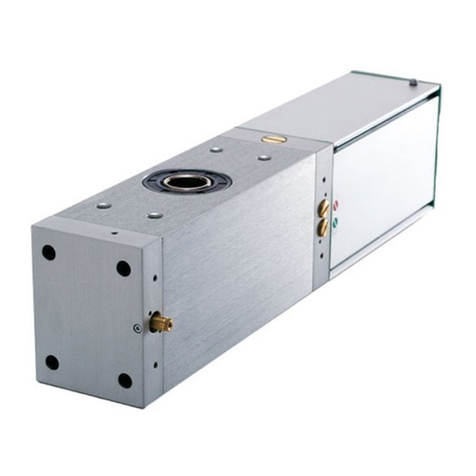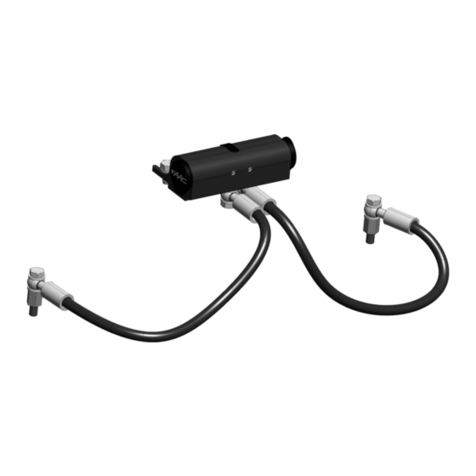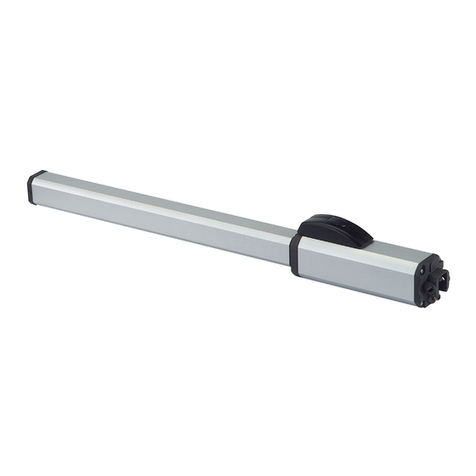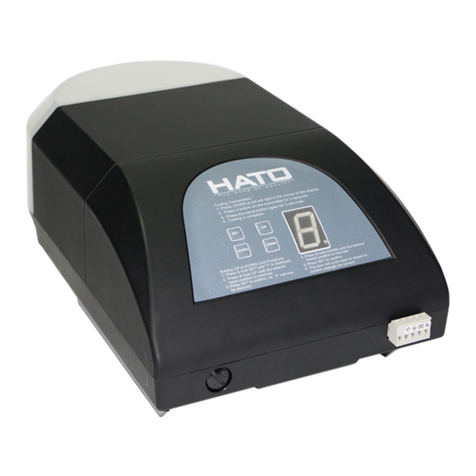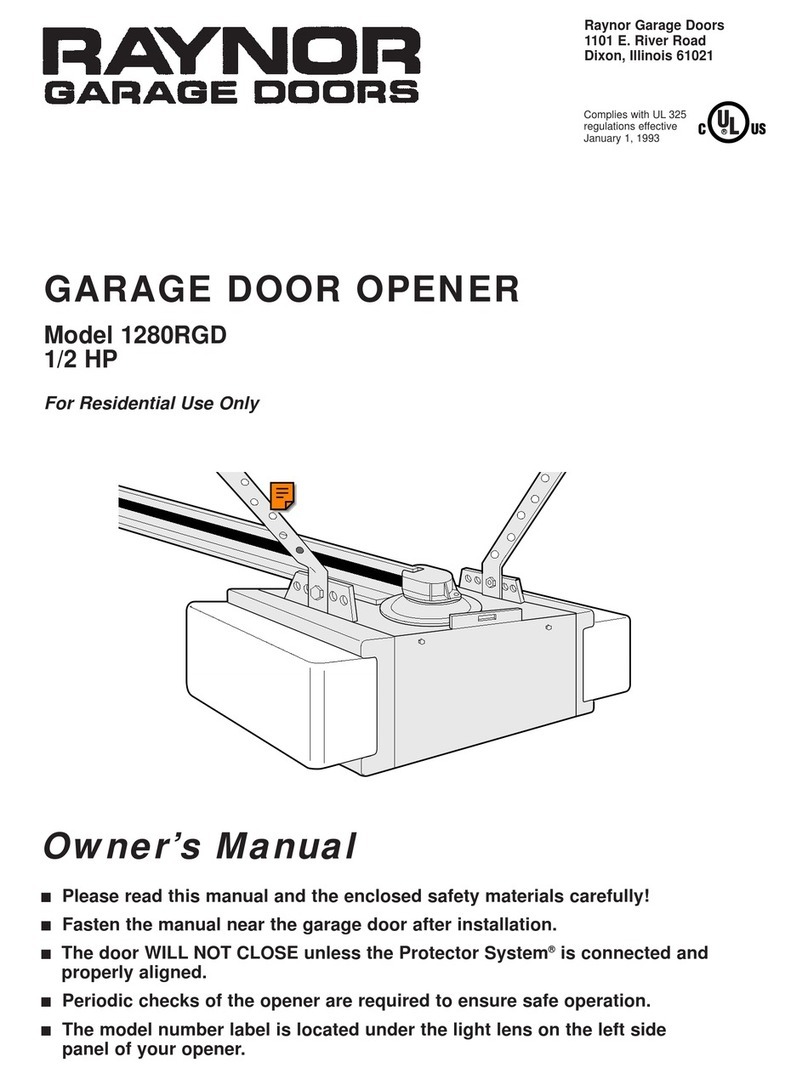
9
1) Give the 1st OPEN command: the operator performs a
deceleration closing manoeuvre until it detects the stop
point.
2) Give the 2nd OPEN command: the operator continues with
an opening movement.
3) Give the 3rd OPEN command in order to define the point
where you wish deceleration to begin.
4) Give the 4th OPEN command to define the opening stop
point, or wait for the automated system to detect arrival at
the stop point. After the stop, the time when the automated
system is left open starts to be counted . This will be the pause
time which will be observed during manual operation (3
minutes maximum).
5) Give the 5th OPEN command: the pause time count is stopped
and the closing movement starts.
6) Give the 6th OPEN command in order to define the point
where you wish deceleration to begin.
7) Wait for the door to reach the stop point and for the
operator to stop.
If the learning procedure terminated positively, the SET UP LED
stops flashing and stays lighted for 5 seconds.
During these 5 seconds, in order to lighten the load on the
release system, you can send OPEN pulses within a time interval
of 2 seconds from each other, in order to reverse the carriage.
One pulse corresponds to a 5 millimetre travel.
N.B.: The carriage can be seen reversing only during normal
operation of the automated system.
ON GROUND MANUAL SETTING OF STOP CONTACT POINT (at the
learning stage)
During the learning stage, the operator searches for the
on-ground stop point, using the maximum force that can be
supplied (550N). To prevent excessive stress, the stop point can
be determined also manually: when the automated system
performs the closing movements, give an OPEN command
when the stop point is reached. If the stop commands at first and
second closing were inconsistent, the automated system signals
the fault status and the learning cycle must be repeated.
During normal operation, the automated system in any case
searches for the stop contact point, but it exercises only the
force necessary to move the door.
When the learning cycle has finished, make the automated
system perform a complete cycle, in order to acquire
the correct closing stop point. If, after the end of this
cycle, the automated system opens the door again,
command closure.
7.3 Pre-flashing
The pre-flashing function can be enabled and disabled
(following an OPEN command, the unit activates the flashing
lamp for 5 seconds before it starts the movement).
Procedure:
1) Press and hold down the SET UP push-button.
2) Press the OPEN push-button too after about 3 seconds. If the
SET UP LED goes ON, pre-flashing was activated, if instead,
it stays OFF, pre-flashing was disabled.
3) Release both push-buttons.
8 MEMORY STORAGE OF RADIO CONTROLS CODING
The control unit has an integrated 2-channel decoding system
named OMNIDEC. This system makes it possible to memory-store
both total opening (OPEN A) and partial opening (OPEN B) of
the automated system - this is made possible by an additional
receiver module (Fig. 6 ref. ) and radio controls on the same
frequency.
During these 5 seconds, in order to lighten the load on the
release system, you can send OPEN pulses within a time interval
of 2 seconds from each other, in order to reverse the carriage.
One pulse corresponds to a 5 millimetre travel.
N.B.: The carriage can be seen reversing only during normal
operation of the automated system.
The control unit establishes the deceleration points.
MANUAL LEARNING WITH LOGIC “E” (SEMI-AUTOMATIC LOGIC)
Press the SET UP push-button for one second. The SET UP LED starts
to flash when you release the push-button. Start the following
procedure within 8 seconds (otherwise the operator will perform
automatic learning):
1) Give the 1st OPEN command: the operator performs a
slowed-down closing manoeuvre until it detects the stop
point and stops.
2) Give the 2nd OPEN command: the operator continues with
an opening movement.
3) Give the 3rd OPEN command in order to define the point
where you wish deceleration to begin.
4) Give the 4th OPEN command to define the opening stop
point, or wait for the automated system to detect arrival at
the stop point and then stop.
5) Give the 5th OPEN command: the automated system begins
the closing movement.
6) Give the 6th OPEN command in order to define the point
where you wish deceleration to begin.
7) Wait for the door to reach the stop point and for the
operator to stop.
If the learning procedure terminated positively, the SET UP LED
stops flashing and stays lighted for 5 seconds.
During these 5 seconds, in order to lighten the load on the
release system, you can send OPEN pulses within a time interval
of 2 seconds from each other, in order to reverse the carriage.
One pulse corresponds to a 5 millimetre travel.
N.B.: The carriage can be seen reversing only during normal
operation of the automated system.
LEARNING WITH LOGIC “A” (AUTOMATIC LOGIC)
AUTOMATIC LEARNING WITH LOGIC “A” (AUTOMATIC LOGIC)
Hold down the SET UP push-button until the SET UP LED goes
on (about 5 seconds). The SET UP LED starts to flash when you
release the push-button.
1) After 4 seconds the operator automatically closes the door
by deceleration until the stop point is detected.
2) The operator moves the door to open. Wait until the stop
point is reached, or give an OPEN command in the position
where you wish to stop motion.
3) The operator closes the door.
4) Wait for the door to reach the stop point and for the
operator to stop.
If the learning procedure terminated positively, the SET UP LED
stops flashing and stays lighted for 5 seconds.
During these 5 seconds, in order to lighten the load on the
release system, you can send OPEN pulses within a time interval
of 2 seconds from each other, in order to reverse the carriage.
One pulse corresponds to a 5 millimetre travel.
N.B.: The carriage can be seen reversing only during normal
operation of the automated system.
The control unit establishes the deceleration points.
Pause time is fixed at 3 minutes.
MANUAL LEARNING WITH LOGIC “A” (AUTOMATIC LOGIC)
Hold down the SETUP push-button until the SET UP LED goes
on (about 5 seconds). The SET UP LED starts to flash when you
release the push-button. Start the following procedure within
4 seconds (otherwise the operator will perform automatic SET
UP).
